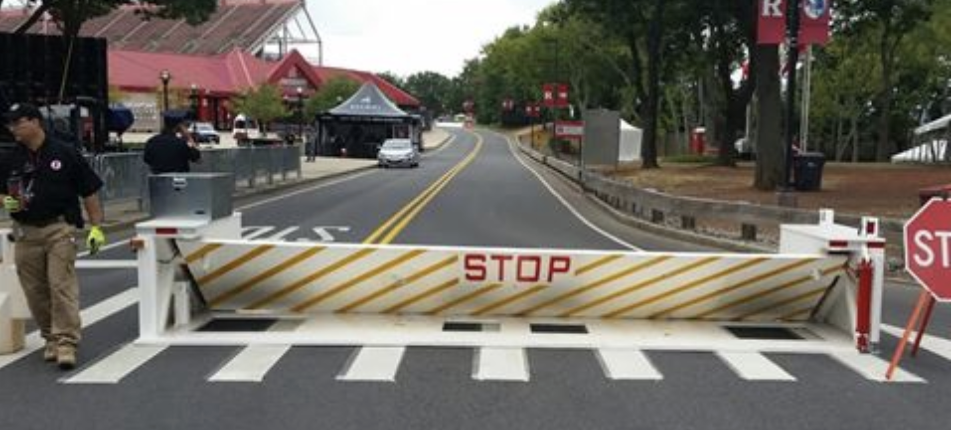As cities continue to host an increasing number of large-scale public events, the demand for mobile vehicle barriers has grown significantly. Whether for farmers’ markets, concerts, street festivals or major sporting events, flexible security systems make it possible to establish temporary protective perimeters quickly and efficiently—without permanent changes to urban infrastructure. According to Delta Scientific, modern barrier systems now offer crash-tested physical protection and can be deployed in a short time by small operational teams.
Portable barrier systems are temporary, movable installations designed to regulate vehicle traffic or prevent unauthorised access to restricted areas. They are used by law enforcement, municipal authorities and event organisers who require robust yet flexible security solutions without the cost and permanence of static installations. These systems can secure road closures, checkpoints, emergency access routes and pedestrian-only zones, while utilising existing street layouts and allowing for rapid removal once an event concludes. Delta Scientific outlines the primary categories of portable barriers and their most common areas of deployment.
Portable Wedge Barriers
Wedge barriers lie flat on the ground and rise to form a solid obstruction once activated. They are commonly used for temporary road closures, security checkpoints at government buildings, major venues, utilities sites and other high-security environments where vehicles must be stopped without altering the road surface permanently.
A widely deployed example is Delta Scientific’s MP5000 portable wedge barrier, a towable system that can be installed in under 30 minutes. Once activated, the hydraulic wedge rises to block traffic lanes and is capable of stopping a 7.5-tonne lorry travelling at 40 mph. These systems are frequently used at parades, street festivals and concert zones due to their combination of mobility and reliable vehicle-stopping performance. With a self-contained, battery-powered design, they operate independently of local utility connections, making them ideal for locations without fixed power infrastructure.
For smaller sites, the modular MP100 wedge barrier offers greater flexibility. Each unit can be deployed by two people and configured to achieve an M30 crash rating. Because emergency vehicles can pass over the barrier when lowered, it is particularly suited to campus environments, temporary emergency zones or outdoor sporting events requiring adaptable access management.
Barrier and Gate Systems
Barrier-arm or gate-style systems act as temporary checkpoints designed to control rather than completely halt vehicle traffic. Modern versions offer rapid installation, high visibility and strong resistance to unauthorised entry.
Delta’s DSC1500 portable barrier system, for example, is transported by trailer and can be deployed by a single vehicle in a matter of minutes. Its hydraulic arm blocks traffic and is engineered to stop vehicles up to 15,000 lbs travelling at 30 mph. These systems are widely used at construction site entrances, military base checkpoints, airport cargo zones and temporary restricted-access sites at large public events. Many organisers also deploy these barriers during event build-up and breakdown phases to secure delivery routes and logistics zones.
Portable Bollards
Portable bollards are particularly effective in high-foot-traffic spaces where safety is required without restricting pedestrian flow. Delta Scientific’s TB100 crash-tested bollards are freestanding and require no permanent anchoring, yet can absorb significant vehicle impact. A cluster of five units meets the M30 safety standard, while ten units achieve M50, sufficient to stop a 7.5-tonne lorry travelling at 50 mph. Integrated wheels and lifting points allow quick placement and connecting cables distribute impact force across the system, enabling scalable protective configurations.
These bollards are commonly used at sporting events, open-air festivals, school campuses and courthouses, where accessibility requirements—such as compliance with standards governing disabled access—must be maintained while preventing vehicles from entering protected areas. Their modular design enables seamless integration with fencing, signage and other security components to create comprehensive perimeter systems.
Modular Surface-Mounted Vehicle Barriers
A newer development in the temporary vehicle security sector is surface-mounted barriers that require no foundations or power supply. These systems consist of interlocking modules that connect flush to the ground to form a continuous protective wall.
One example is the DSC50 ‘S’, which can be installed by one or two individuals within minutes. Tested to ASTM SC30 standards, it can stop a vehicle travelling at 30 mph. Its discreet, low-profile design makes it well-suited to temporary pedestrian zones, emergency command areas, cultural festivals and outdoor hospitality spaces requiring short-term vehicle mitigation measures.
Use Cases in Urban Management, Public Safety and Emergency Response
Portable barriers are most effective where high security requirements meet rapidly changing environments. Typical deployment scenarios include:
- Traffic management and visitor protection at parades, concerts and trade fairs
- Temporary secure zones at construction sites
- Protection of emergency operations and incident sites
- Urban events such as seasonal markets, marathons and street fairs
Because crash-tested mobile systems do not require permanent changes to roads or public spaces, they enable cities to create safe, adaptable environments while maintaining normal infrastructure use.
Barriers for Major Events and Rapid Deployment
Delta Scientific is among the leading manufacturers of mobile crash-tested barriers, with systems certified to ASTM standards M30, M40 and M50. Designed for rapid deployment and long-term durability, they can be installed without excavation on asphalt, paving or compacted soil. This makes them suitable for large-scale public events, critical facilities or any scenario requiring the rapid establishment of a secure perimeter.


